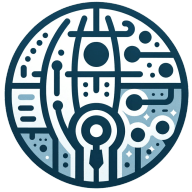How Technology Enhances Employee Development: 7 Tools You Can Use
In today's rapidly evolving digital landscape, staying ahead in employee development is crucial. Industry leaders such as a CEO and a Director of Human Resources share their expertise on leveraging technology for this purpose. The article begins with insights on using TalentLMS for seamless learning and wraps up with AI-powered mentorship for better guidance, featuring a total of seven expert perspectives. Discover actionable strategies to transform employee growth and engagement with innovative tools and platforms.
- Leverage TalentLMS for Seamless Learning
- Use Online Performance Management Systems
- Adopt Microlearning for Flexible Training
- Implement VR Simulations for Practical Skills
- Incorporate Gamification to Boost Engagement
- Utilize Personalized Learning Platforms
- Apply AI-Powered Mentorship for Better Guidance
Leverage TalentLMS for Seamless Learning
At Software House, we leverage technology to streamline and enhance employee development through learning management systems (LMS). One specific tool we use is TalentLMS, which allows us to offer personalized training, track progress, and create a seamless learning experience for our team. This platform helps employees access courses and materials at their own pace, enabling continuous learning and skill development across various roles. By using TalentLMS, we not only support technical growth but also encourage leadership and soft skills training, ensuring a holistic approach to development. The platform's integration with performance management helps us identify skill gaps and tailor our training programs accordingly. This approach has boosted employee engagement, retention, and overall productivity, empowering our team to grow alongside the company's expansion.
Use Online Performance Management Systems
We use an online performance management system to enhance our employee development efforts. The system allows us to streamline our processes in many ways. First, the performance data is stored all in one place and can be accessed at any time by simply logging onto a website. Employees are able to have different levels of access within the system, depending on their respective roles. We are also able to create, modify, and launch various types of performance appraisals at our discretion, all within a single source. The system's reporting functionality also plays a major role in helping us identify trends and patterns in scoring based on position, tenure, department, supervisor, or other various data points of our choosing. This helps us determine areas where we can further support our employees, as well as build upon their strengths, based on the customizable reporting data. We also manage other parts of the performance management process within the system, such as performance improvement plans, disciplinary actions (i.e., verbal and written warnings), and setting and tracking goals. Overall, the system has allowed us to take a more collaborative approach, while at the same time enabling us to operate more efficiently to best support our employees in achieving their short-term and long-term professional goals.

Adopt Microlearning for Flexible Training
Microlearning platforms are revolutionizing employee development by offering training content in small, easily digestible chunks. This method helps employees to learn at their own pace and fit training into their busy schedules. By focusing on one topic at a time, retention rates improve significantly.
It's a modern approach that fits perfectly with the busy lives of today's workforce. Embrace microlearning to help your team stay ahead and continuously improve their skills.
Implement VR Simulations for Practical Skills
Virtual Reality (VR) simulations are transforming how employees learn by providing immersive experiences that mimic real-life scenarios. This type of training helps employees gain practical skills in a safe environment, where they can make mistakes and learn from them. The realistic simulations also ensure that employees are better prepared for actual job tasks.
Companies can see nearly immediate improvement in job performance following VR training sessions. Explore VR simulations to boost your team's confidence and capabilities.
Incorporate Gamification to Boost Engagement
Gamification platforms use game design elements to make learning more engaging and fun for employees. By incorporating points, badges, and leaderboards into training programs, employees become more motivated and invested in their learning process. This method not only increases participation but also makes learning more memorable.
It taps into people's natural love for games, turning learning into an enjoyable activity. Try gamification to turbocharge your team's enthusiasm for learning.
Utilize Personalized Learning Platforms
Personalized learning platforms are designed to tailor content specifically to the needs of each employee. Through the use of data and analytics, these platforms identify the strengths and weaknesses of employees and provide customized training plans. This ensures that employees receive the most relevant and efficient learning experiences.
Personalized learning also helps in keeping employees engaged as the training feels more directly applicable to their roles. Implement personalized learning to meet the unique needs of your workforce and enhance their development.
Apply AI-Powered Mentorship for Better Guidance
AI-powered mentorship platforms leverage artificial intelligence to connect employees with the most suitable mentors. These platforms analyze various aspects such as skills, experience, and learning preferences to pair employees with mentors who can provide the most relevant guidance. This leads to more meaningful and productive mentorship relationships.
The use of AI also helps in making mentorship accessible to more employees within an organization. Utilize AI-powered mentorship platforms to foster a culture of continuous learning and professional growth within your team.


